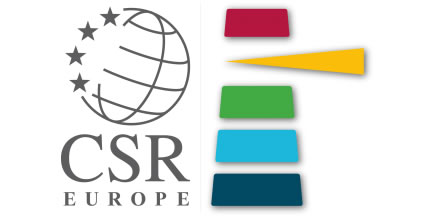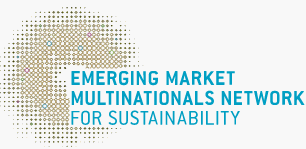Home > Best Practices > Best Practices List >
China Harbour Engineering Company Ltd.: Turning Construction Waste into Treasure to Obtain Environmental and Economic Benefits
2016-06-22Sino-Swedish Corporate Socialadmin0010
Company Profile
China Harbour Engineering Company Ltd. (CHEC) is a subsidiary of China Communications Construction Company Ltd. (CCCC). It provides infrastructure portfolio, which covers the business of marine engineering, dredging and reclamation, roads and bridges, railways and airports. CHEC has more than 60 oversea branch offices or subsidiaries serving clients in over 80 countries around the world。Its 10,000 plus employees are undertaking 12.5 billion USD worth of projects globally. Being an international brand in the contracting engineering industry, CHEC has accumulated over 5 billion USD in annual contracts and its total turnover reaches 2.8 billion USD.
Challenges
The coral-reef limestone widely exists in the world. It is especially prevalent on the Red Sea coast between northeastern Africa and the Middle East. According to available drilling data, the offshore strata of Sudan’s Red Sea coast are mainly composed of limestone and debris, which were formed from coral reef remains through long geological process. In recent years, the proper disposal of the excavated coral-reef limestone is one of the challenges that CHEC faces in the port and coastal construction project in Saudi Arabia and Sudan, located on the west Red Sea coast. At the same time, two more challenges are left when it comes to the sand-stone replacement in the construction of a large area of storage yard and road infrastructure: Firstly, it may be difficult in many countries to extract sand-gravel aggregates since they are in small amount, and secondly, the long-distance transport of sand-gravel aggregates to the construction site will lead to exorbitant costs. Therefore, what urgently needs to be addressed is the problem that how to conduct researches on the lithology of coral-reef limestone with local materials, and how to carry out engineering application researches on the use of the limestone in storage yard fillings, weighting foundations and pile foundations, thereby turning coral-reef limestone---a kind of construction waste into useful engineering materials.
Solutions
In order to solve this problem, CHEC’s project personnel carried out particle analysis experiment, beating experiment, indoor CBR experiment and direct shear test on the coral reef sand material, and the results showed that it belongs to the category of sand containing gravels or the category of gravelly soil with sand. Based on a comprehensive analysis of its physical mechanical indexes, it is known that the coral reef sand material can be used as foundation fillings. Besides, the material can also develop anti-liquefaction feature, meet the ground settling restricts and bearing capacity requirement of the design after proper ground treatment, such as vibrant impaction and dynamic compaction.
1. The research group defined engineering mechanics characteristics of the coral-reef limestone through sample drilling and in-situ experiments, such as dynamic sounding experiment and plate bearing test.
2. The basic physical features of lime soil and reef limestone, including their grain composition, structural properties, cementing properties, strengths and loading capacities, were got by indoor geotechnical tests.
3. The treatment scheme for reef limestone foundation and the evaluation criterion for its effects were decided after blowing and filling various kinds of reef limestone and then checking and studying the results of different treatment schemes. The surface structural design was also optimized according to the results.
After a series of experiments and applied researches on the geotechnical engineering of coral reef limestone, the group drew a conclusion that coral reef limestone can be put into use in engineering application, such as in foundation fillings, weighting foundations and pile foundations.
Achievements
This engineering application technology turns coral reef limestone---a construction waste into an engineering application material, from which the CHEC has benefited a great deal.
The coral-reef limestone engineering application technology guaranteed CHEC’s escort engineering project went smoothly. It was successfully put into use in the foundation back-filling of storage yard and road in Sudan’s new Container Terminal. It helped to expand CHEC’s market share in Sudan and provided technological support for the Sudan’s livestock harbor project and the Suakin project. Besides, this technology was also widely applied in projects of Chittagong port and Zha Waer port.
It lowered costs and shortened construction period. In the application of this technology, CHEC on the one hand, took advantage of harbor and fairway to excavate coral reefs as materials for foundation back-filling, which significantly lowered the construction costs. For instance, in Saudi Arabia’s Chittagong port project, it cut off 10% construction costs. On the other hand, this technology also helped to shorten construction period and reduce engineering difficulty, bringing about high economic and environmental benefits.
It increased engineering quality. In areas where sands of coral reefs were used in land reclamation, CHEC adopted vibrating compaction and dynamic consolidation method in the disposal of coral reef foundations, which improved foundation bearing capacity, eliminated uneven settlements and reduced post-construction settlements.
Undoubtedly, the development and utilization of coral-reef limestone has paved a new path for the reclamation project in the construction of ports at coastal regions. It has also made a good foundation for CHEC’s market expansion.
Prospects
The technological achievements of coral-reef limestone engineering application researches will solve some key technical problems in construction design and construction practices, promote the raise of technological level and facilitate the improvement of construction effects. This research will also change the choices of design scheme and construction technology, since the comprehensive utilization of coral-reef limestone--a kind of “construction waste”, can fully meet the requirements of host countries on environmental protection. In future, the research results will be used in coastal engineering constructions in countries such as Egypt, Sudan, Saudi Arabia and Yemen, which is of great guiding significance to the implementation of China’s “going-out” strategy for international project contracting as well as CHEC’s market expansion and project construction in countries and regions alongside the Red Sea. The construction practice of the research results are promising. It is expected to realize large-scale engineering and bring about good social, economic and environmental benefits.
Best Practices
- The 100-year brand — Air Liquide also has a sense of juvenile
- Beijing Public Transportation Corporation: Developing green transportation to build a harmonious and livable capital
- CGN: Building a modern factory in barren deserts and developing a new win-win cooperation model along “Belt and Road”
Upcoming Event

All the materials on the site “Source: XXX (not from this site)” have been reprinted from other media. They do not imply the agreement by the site.
All the materials with “Source: CSR-China Website” are the copyright of CSR-China Website. None of them may be used in any form or by any means without permission from CSR-China Website.
GoldenBee Official WeChat
Copyright © Csr-china.net All Right Reserved.
京ICP备19010813号










